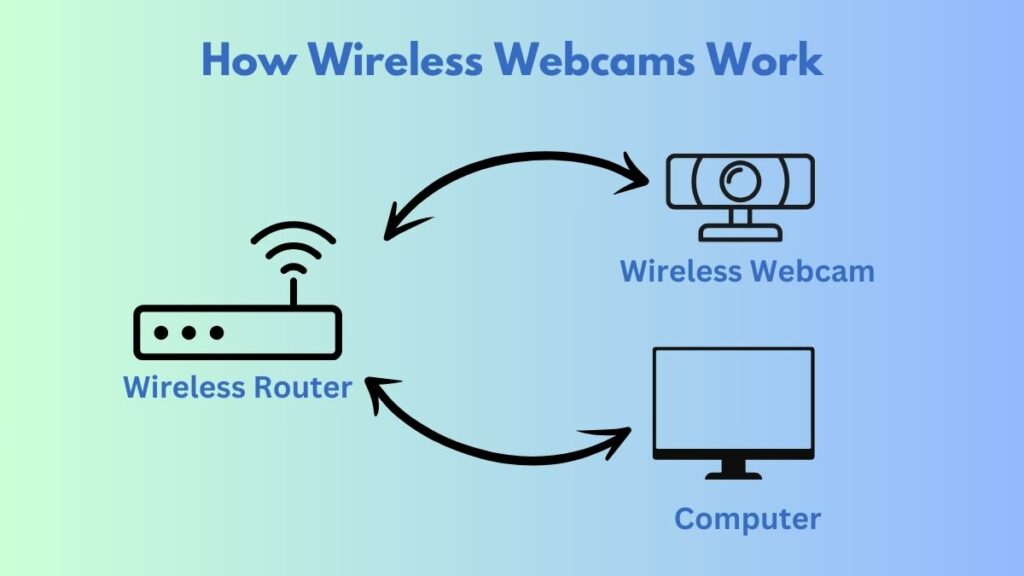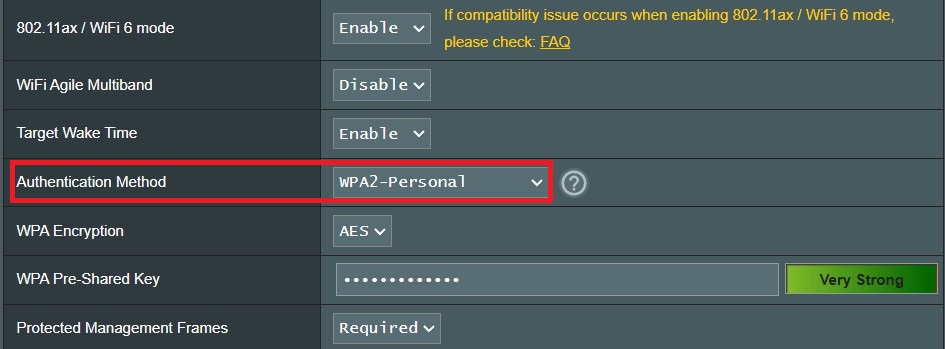As we integrate more smart devices into our homes, each becomes a potential gateway for intruders. One category of such devices is wireless webcams. These tools, designed to help us monitor and protect, can pose a significant risk to privacy.
If not properly secured, the tools designed to bring us peace of mind could inadvertently turn against us. The risks are real and ever-growing, from hackers exploiting weak security settings to malware that turns these devices into spying tools.

What Are Wireless Webcams?
Wireless webcams, also known as WiFi cameras, are a type of digital camera designed for transmitting video and audio signals over a wireless network.
Unlike traditional webcams, which require a physical connection to a computer or recording device, wireless webcams use WiFi to send data to a router. This wireless functionality lets you view live video streams from anywhere with an internet connection.
Wireless webcams are known for their convenience. They allow us to monitor our homes remotely, check in on pets during long workdays, or even serve as a modern-day baby monitor.
Key Features:
- Connectivity: Wireless webcams can be set up to interface directly with other smart devices, computers, or cloud-based storage systems.
- Portability: Due to their wireless nature, these cameras offer flexibility in placement and can be installed almost anywhere within the range of the network signal.
- Integration: Many wireless webcams are part of broader smart home systems. They can be integrated with other devices like door sensors and smart locks.
- Accessibility: You can access video feeds through a smartphone app or web portal. This adds convenience but also introduces privacy and security concerns.
Typical Uses of Wireless Webcams
Wireless webcams are versatile devices used in various settings, each serving different purposes ranging from security to communication. Here’s a look at some typical applications of wireless webcams:
Home Security
One of the primary uses of wireless webcams is in home security. Homeowners install these cameras to monitor indoor and outdoor property, deter burglars, and identify unauthorized entry.
The ability to check live video feeds remotely through smartphones has revolutionized home security, allowing homeowners to keep an eye on their properties even when they are miles away.
Baby and Elderly Monitoring
Wireless webcams are often used as baby monitors, allowing parents to watch their infants from another room. Similarly, they monitor elderly family members who may need immediate assistance, providing peace of mind to family members.
These specialized webcams sometimes include night vision, two-way audio communication, and movement sensors to alert caretakers of unusual activity.
Business Surveillance
In the business context, wireless webcams are crucial components of security systems. They oversee operations, monitor employee activities, and secure entry points. Retail businesses use these cameras to prevent shoplifting and ensure customer and employee safety.
Pet Monitoring
Pet owners also use wireless webcams to monitor their pets when they are not home. These devices can help owners see if their pets are safe, getting into trouble, or needing assistance. Some webcams even have features like remote treat dispensers.
Healthcare Applications
In healthcare, wireless webcams are used for patient monitoring and telehealth services, where doctors consult remotely with patients. This technology has been vital in providing continued medical consultation when in-person visits are not feasible.
Privacy Risks of Wireless Webcams
Now that we know how great wireless webcams are, here comes the kicker. These devices have significant privacy risks that can turn them into invasive threats. Imagine these scenarios:
- Home Intrusion: Imagine you've installed a wireless webcam to monitor your front door. One day, hackers gain access to the camera's feed. They use the information to plan a burglary.
- Data Sniffing in Public: You check your home security camera from a laptop while sitting in a coffee shop. An eavesdropper on the same network intercepts the video stream, capturing sensitive moments without your knowledge.
- Exposed Cloud Storage: You set up webcams around your house that automatically upload footage to a cloud service. The cloud provider suffers a data breach, and your video files are leaked online.
Known Wireless Webcam Incidents
To illustrate the risks of scenarios like this (and other similar ones) that happen, consider the known incidents that have already occurred:
- During the Russia-Ukraine war, Russian agents have been exploiting Ukranian wireless cameras to aid in military intelligence efforts.
- TikTok broadcaster and mom Kurin Adele had her wireless baby cam hacked in 2023. The hacker surreptitiously spoke to the infant via the device, scaring her.
- In 2018, new parents Nathan and Ellen Rigney had their baby monitoring wireless webcam hacked. The hacker used the information to send them threats via the webcam interface.
How Hackers Access Wireless Webcams
Hackers are often highly innovative individuals who devise many ideas to hack wireless webcams. Many of these operations are known, but many tend to disregard standard safety practices. Here are some ways hackers access wireless webcams:
- Weak Security Settings: Many users forget or don’t change default passwords. This makes them easy targets for hackers.
- Network Sniffing: Hackers use tools to monitor network traffic, intercepting video feeds from wireless webcams that do not use encrypted transmissions.
- Phishing Attacks: An unsuspecting user might receive an email or message that appears to be from a legitimate source. Clicking a link can lead to the installation of remote access software.
- Software Vulnerabilities: Outdated webcam software can contain unpatched security vulnerabilities that hackers exploit to gain remote access.
- Remote Access Trojans: RATs are malware programs that allow a hacker to remotely control an infected computer and its peripherals, including webcams.
- IoT Search Engines: Search engines like Shodan are designed to locate internet-connected devices, including webcams, that are accessible online.
- Man-in-the-Middle Attacks: In a MitM attack, the hacker intercepts the communication between the webcam and its network.
- Weak Encryption: Some webcams use weak or outdated encryption methods, or none at all, making it easier for hackers to decrypt the data streams.
How to Secure Your Wireless Webcams
Ensuring the security of your wireless webcams doesn't require deep technical knowledge. Here are some straightforward steps that you can easily implement to enhance the privacy and security of your devices:
Use Strong Passwords
One simplest yet most effective way to secure your wireless webcam is to change the default password to a strong, unique one. Avoid common words and simple sequences; instead, create a password that combines letters (both upper and lower case), numbers, and symbols.
How to do it: Access the webcam's settings through the app or software. Look for a section labeled ‘Security' or ‘Password'. Enter your new password there. If you need more help, consult the user manual or the manufacturer's website for support.
Secure Your WiFi Network

Since your webcam sends video over your WiFi network, ensuring your WiFi is secure is crucial. Use WPA2 or WPA3 encryption—this is usually a setting you can find and change on your Wi-Fi router.
How to do it: Log into your router admin dashboard (the user manual will have instructions on how to do this). Look for the “WiFi Encryption” option and select WPA2 or WPA3. Save your settings.
Use a VPN
For added security, especially if you need to access your webcam remotely, consider using a Virtual Private Network (VPN). A VPN encrypts the data from your webcam, making it harder for others to intercept.
Consumer-friendly VPNs: Services like NordVPN or Surfshark offer user-friendly apps that guide you through setting up a VPN on your home network. These services often include customer support to help you through the setup process.
Regularly Update Your Webcam
Manufacturers often release software updates for webcams that fix known vulnerabilities. Keeping your webcam updated is essential for maintaining security.
How to update: Open the webcam's app or software and look for a “Check for Updates” option in the settings menu. If an update is available, follow the prompts to install it.
Monitor Alerts and Notifications
Many webcams have built-in security features, such as motion detection alerts. Enable these notifications to monitor any unusual activity.
Setting it up: Find the notifications or alerts section in the webcam's app. Turn on the features you find helpful, such as alerts for motion or sound detections.
Final Thoughts
In our increasingly connected world, the convenience of wireless webcams in our homes brings with it the responsibility to safeguard our personal spaces. Understanding the vulnerabilities associated with these devices can help you implement appropriate security measures.
Changing default passwords, securing your WiFi network, using a VPN, regularly updating your device, and monitoring for unusual activity are all practical steps that can make a significant difference.
Remember, the goal is to enjoy the benefits of modern technology without compromising our privacy and security.
